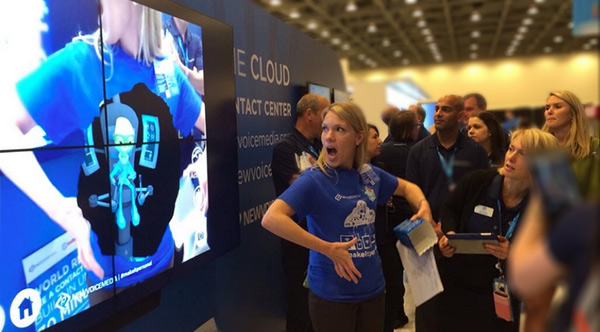
2014 was a great year for Augmented Reality
If you’re interested in the past, keep reading. However, if you’re looking for a more current rundown of Augmented Reality trends, check out our recently published forecast for the year ahead, detailing the 5 Top Virtual Reality & Augmented Reality trends for 2015.
Now back to our Augmented Reality forecast for 2014
In 2014, there will be Augmented Reality bed sheets and AR coloring books for kids. More importantly, Marxent’s Top 5 Augmented Reality Trends for 2014 illustrates how brands, retailers and educators will advance the seamless projection of digital content and experiences into reality. Curious about current AR trends? Take a look at our Top 10 AR apps of Summer 2014 and Top 5 AR games of 2014.
1. Wearables – beyond Google Glass
Google Glass will definitely walk the red carpet in 2014, but not alone. Several other wearable AR options are emerging in the marketplace. In 2013, Glass was only available to developers and a select group of explorers. With a steep $1500 price tag, there’s definitely room for other players. Keep your eyes open for Vuzix M100 Smart Glasses, ReconJET sports glasses and Indiegogo project GlassUP. These among others are set to accompany emerging wearable options from tech giants Samsung, Apple, Microsoft and Sony.
2. Experiential retail Augmented Reality
Ikea’s 2014 Augmented Reality catalog app is the most notable retail experiment with AR but it’s also just the beginning. From in-store signage to geo-fenced couponing, 2014 will be the year that retailers start to explore the true power of Augmented Reality in building customer engagement. Combined with services like Qualcomm’s Gimbal context awareness and proximity platform, retailers will start to uncover new Augmented Reality and mobile services that move the needle on sales.
3. Immersive Augmented Reality for live experiences
Spend a few minutes scrolling through the Marxent Labs gallery of examples of Augmented Reality for live events and trades shows to see where 2014 is headed. From AR gaming tied to lead generation and interactive Augmented Reality t-shirts, the experiences are only as limited as the creativity of event marketers. Let’s just say that we know some pretty creative event marketers. We’re also seeing an emerging trend in connecting Augmented Reality with Kinect gesture recognition, complex physics, green screen video and for a truly immersive experience. Check out these Augmented Reality case studies for live events.
4. DIY Augmented Reality for education and learning
Educators on the cutting edge have been experimenting with free services offered by some universal Augmented Reality app companies. 2014 will bring greater visibility to these efforts, along with new concepts that allow for commercialization of AR for the education and learning fields. From teachers creating DIY AR projects in the classroom to apps like ZooBurst which allows kids to create their own 3D pop-up books, 4D Elements for learning chemistry, Google Sky Map that project constellations into the night sky, and apps from institutions like the Getty Museum, Augmented Reality apps for education are on the cusp of exploding.
5. AR for selling (and driving) cars
This year, Ford augmented their print auto sales brochures for cars like the Explorer and the Mustang and Volvo used AR to draw attention to its cars at the Shanghai Auto Show. Next year, Nissan is augmenting the driving experience with custom AR glasses. Just announced at the 2013 Tokyo Motor Show, Nissan’s 3e Augmented Reality glasses are coming to a dealership near you.
From wearables to car sales, 2014 will mark the year of Augmented Reality as a mainstream marketing technology. Within the next three to five years, rich and varied Augmented Reality marketing experiences will be a part of what consumers come to expect from their favorite brands. Just as individuals expect instant communication via platforms like twitter and SMS today, over the next five years Augmented Reality will become a quintessential method of communicating with customers and building relationships.












